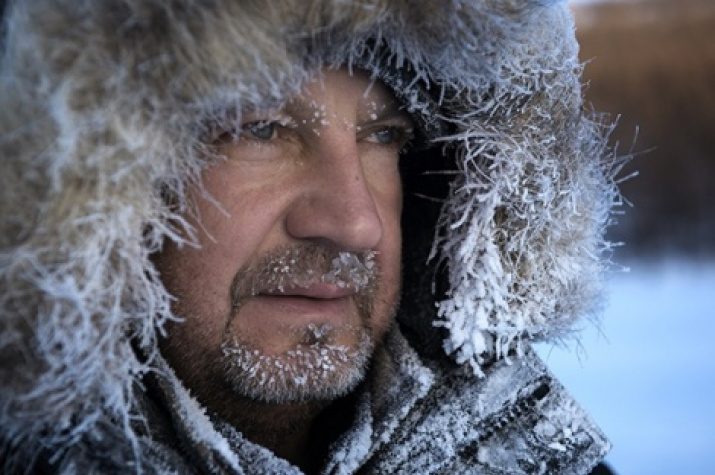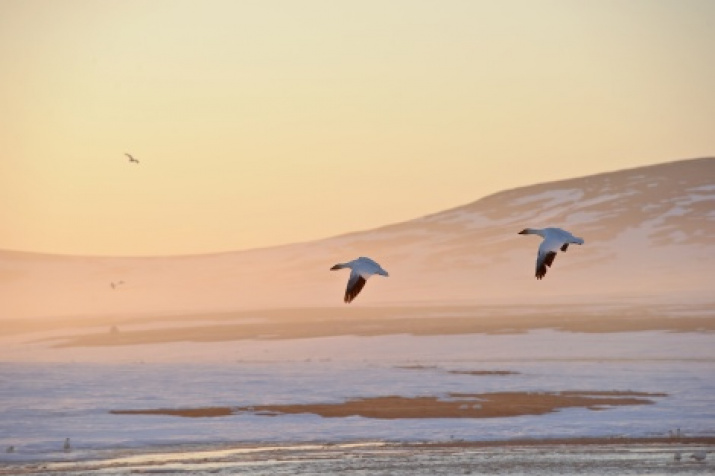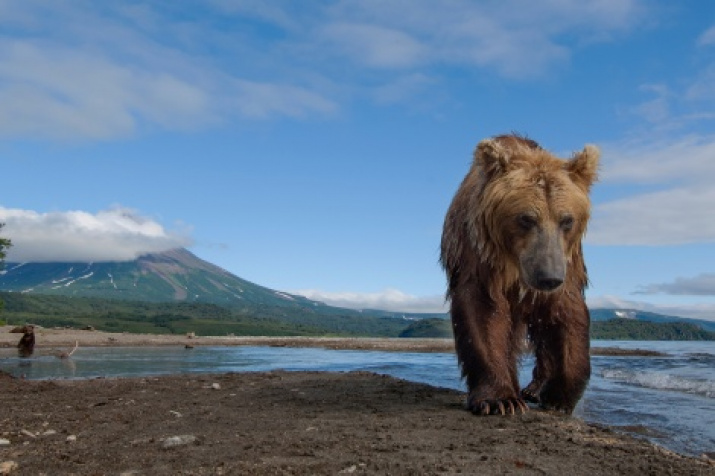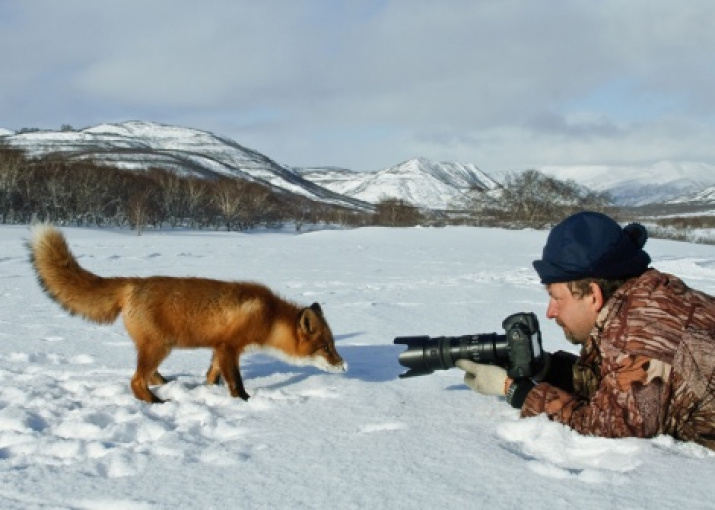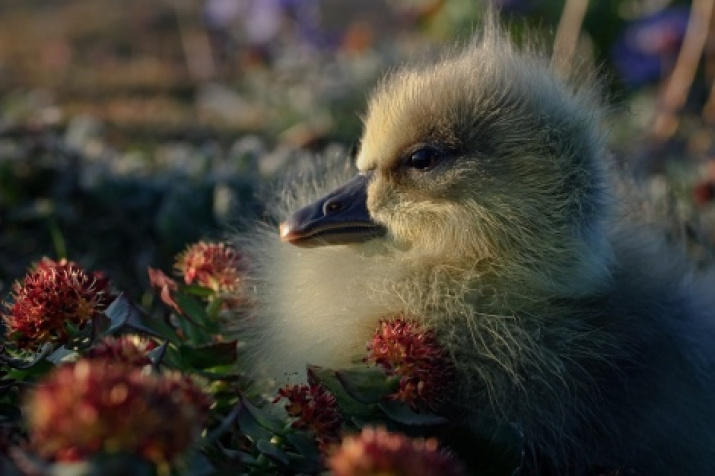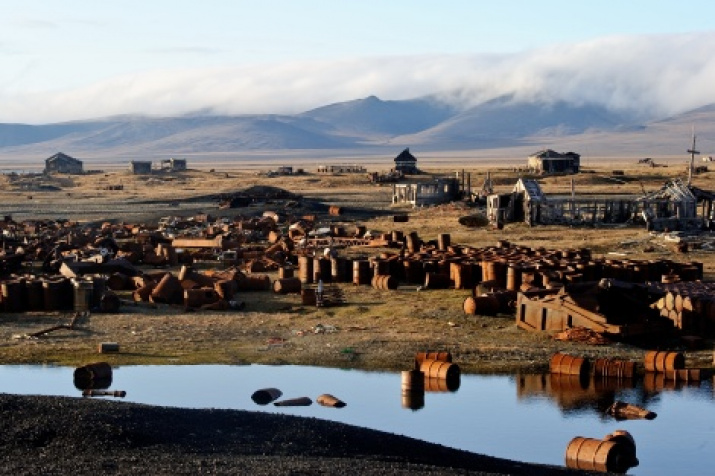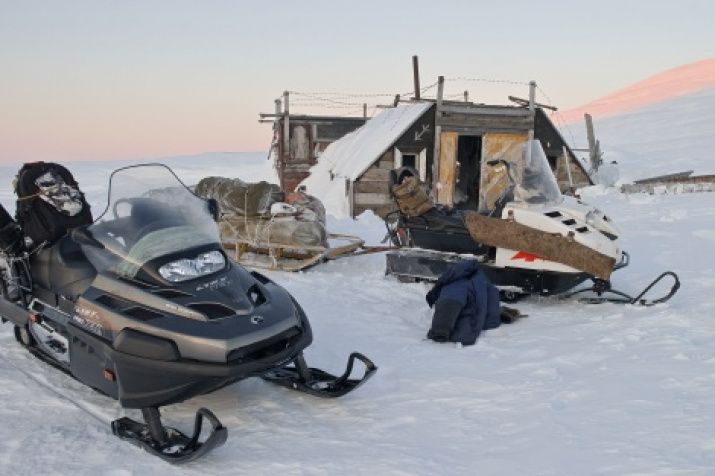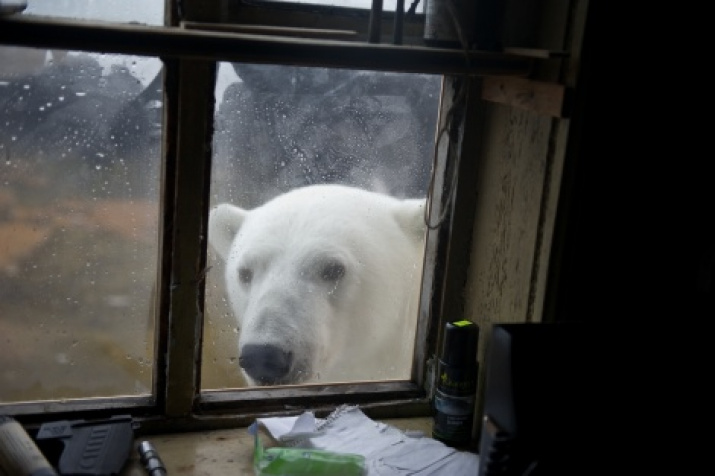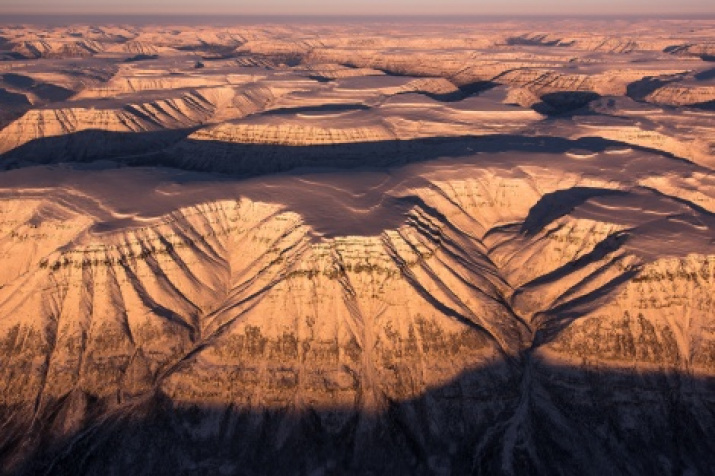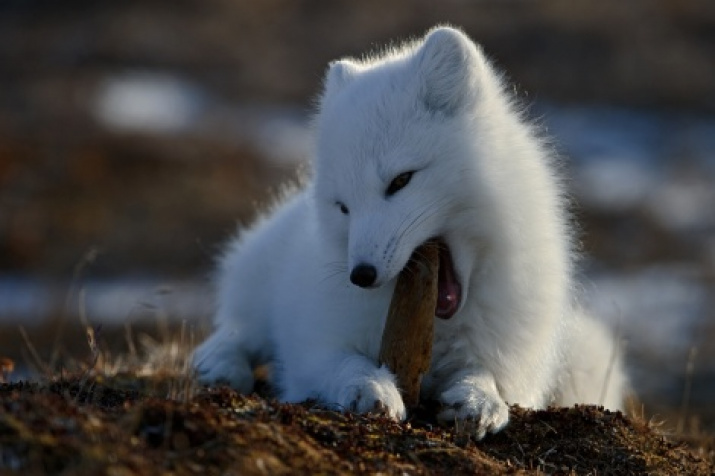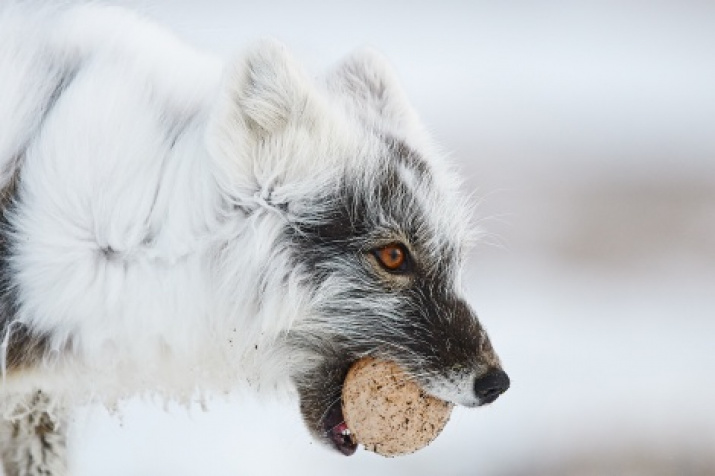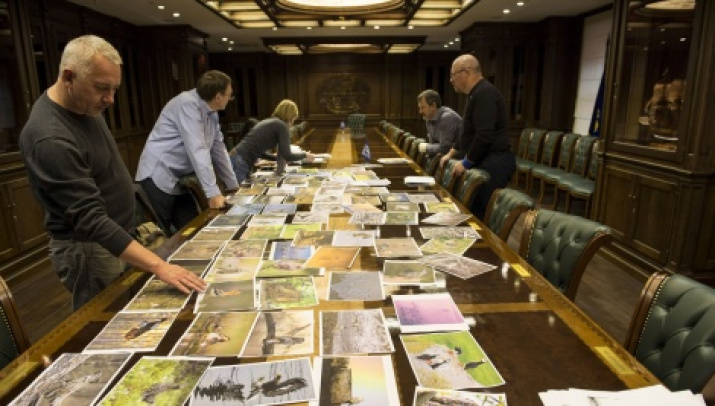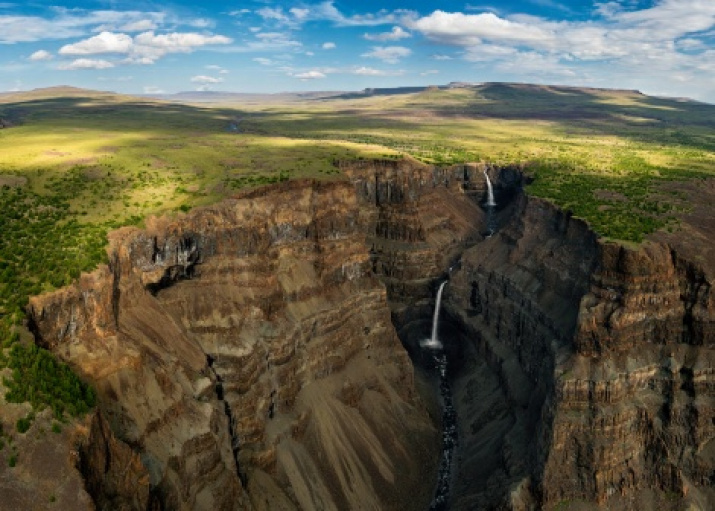March 31 is the deadline for submitting works to the IV “Most Beautiful Country” Photo Contest, and we decided to interview Sergey Gorshkov, a famous Russian wildlife photographer and chairman of the jury of the Photo Contest.
- Sergey, how did you start your career in photography?
I was born in a Siberian village. We did not have a TV in our house, and I spent all my free time in my childhood alone with nature. My hobby, photography, began with a banal case. I caught chickenpox, and for a long time did not connect with other kids. At that moment, my father brought me a Smena 8-M camera from the city. I began to take pictures of everything that could be found in the village: chickens, pigs, calves, ducks and waders on the river. I covered the windows in my room with black sheets to prevent the light from penetrating it, and constantly printed black and white photographs ... Once I made a shelter from the reeds, lay down in the mud and waited for waders to come closer, because long-focal-length optics didn’t exist then. I remember one bird came some 15-20 centimeters to the shelter, and I managed to take a picture.
After school I left the village for an institute in Novosibirsk. There I found a flea market where used cameras were sold. I bought a wide-screen German camera with a 6x4.5 frame and was very happy.
In the late 1990's, I visited Kamchatka for the first time. You know, Kamchatka leaves no one indifferent, and I wasn’t an exception. I thought about buying a photo album as mementoes, but couldn’t find one. Then I came across a thought: "What a beautiful land, and there is not a single album. If I could, I would have come and photographed myself. "
A few years later, when I sold my business and had free time, I took my camera and came back to Kamchatka, to Kuril Lake. There I started my first project about bears. I cannot put the camera down since then.
- Do you think a wildlife photographer needs special education?
In fact, in Russia there are no schools for wildlife photography. There are books, but, in my opinion, they are all monotonous and boring. So I studied myself, by trial and error. Nature is still my main teacher. I also buy a lot of photo albums. They allow you to analyze and understand how the pictures are taken. When I am in a bad mood or just in winter, when Moscow is gloomy, I like to look through them and get inspiration from them. It's not that I'm trying to copy, it's impossible to copy, because every moment in nature is unique and unrepeatable. But you can learn a lot from such photos.
-What is the first thing to consider when you are going to a photographic expedition?
I'll tell you this from my expedition to Wrangel Island. Preparation for filming took more than a year. Before my first visit, I searched the Internet for pictures from the island. There were not many of them and they were far from reality. I brought my photo equipment, products, and things for all occasions and any weather to the island. I took means of transport to the island as well. A snowmobile and petrol I bought in Moscow, then forwarded it to Arkhangelsk, and from there on the icebreaker "Mikhail Somov" along the Northern Sea Route to Wrangel Island. A quad bike was delivered to the island from New Zealand. On Wrangel island I realized that I do not need much to be happy. The main thing is that the equipment does not fail in extreme conditions.
The one thing that I couldn’t get used to is endless waiting for flying weather. On Wrangel Island helicopters take off from Pevek - the northernmost city of Russia. I was told about a sign: if there is good weather in Pevek, there is a storm on the island; if it is calm on the island, it storms in Pevek. And finally, if the weather has improved both on the island and in Pevek, the helicopter has left for an assignment and when it returns, the weather will be bad again. All other problems are insignificant compared to unpredictable weather.
- Tell us about wild animal shooting, for example, that of bears?
When contacting with bears, you should always remember that it's a predator and you can fall victim at any moment. Therefore, it is important to follow certain rules. The behavior of bears is difficult to predict. Bears, like people, are different; every bear has its own character, its own behavior, and each has its own personal space. For one beast it is one hundred meters, for another - two. If you violate these boundaries, most animals become aggressive. I always have security flares in my pocket, hand flares on my belt, and a “toothpick” in my hand (that is what they call a long stick on the island).
- Are there any places in Russia that, in your opinion, photographers should pay special attention to?
I think these are places where no one has ever taken pictures. When I choose a route for my expeditions, I always think whether I should go to a place that many photographers have already visited. Does it make sense? Is it not better to visit a place where no one has been to and to make really unique images there? Russia is so huge that you can find places where no photographer has gone before. Of course, it is not always possible to go on such expeditions, but I believe it is good to strive for novelty. Then it will be interesting, and everyone will wait for your pictures.
- What would you advise wildlife beginner photographers?
The most important quality is a sincere desire to photograph. The second is patience. Once in Africa, I waited for a leopard cub from early morning until late at night. And it happens everywhere. Do not run after animals, you need to choose a beautiful place and wait patiently. Moreover, you shouldn’t pursue luck from the very beginning. Everybody wants to win all contests at once and become a star. I think that a significant number of good photos is required. And if you have what to share with people, they will notice you.
- You’ve been chairman of the jury of the “Most Beautiful Country" photo contest since it was first held in 2015. What new categories have been added this year?
Every year we add new categories, while the most popular categories of "Landscape", "Wild Animals", "Underwater World", and "Cultural Heritage" remain. In 2018, we have added "These funny animals" and "Russia in faces".
- How are the entries selected?
At first, photos are checked for compliance with the rules and technical requirements of the contest. Pictures of pets and works of poor quality are deleted from the contest. Then the photos are submitted to the expert committee. In their accounts on the website of the contest, our experts rate the works on a five-point scale. The works that get 4 or 5 points will get into the semifinals. The next stage is direct voting of the expert commission members at the Headquarters of the Society in Moscow. Each of them marks five best photos in each category with special chips. The photos that receive the largest number of chips are in the final. As chairman of the jury, I act as coordinator and observer.
You should remember that the expert commission members are the most experienced photographers and photo editors, heads of photo services of the largest newspapers and news agencies. They have huge practices of selecting; they see thousands of pictures every day and are able to select the best.
- What criteria are employed by the jury when selecting works?
There are several things that we pay special attention to. First, technical quality. Second, woks must meet the requirements specified in the rules of the contest. If in doubt, read the rules again so it would not be a shame. This will insure you against stupid mistakes, for example, when instead of photos of wild animals, entrants offer good pictures, but those of cats, dogs or pigeons. Special attention is paid to the format of a specific category to which a photo is submitted. For me, as a viewer, the most important thing in photography is light, moment, uniqueness, and there is one key component that I always pay attention to - novelty! You do not need to clone photos that you have seen in other competitions. You need to shoot like no one else has done before, and this requires imagination.
You should understand that the members of the jury are men like the rest of us. Apart from assessing objective parameters, they have their own vision, and they are guided by impressions and emotions.
Let us remind you that pictures for the IV contest may be submitted on the website. Sign up and upload your works till March 31, 2018. There are neither age nor location limits to enter the contest. The main condition is that photos submitted to the contest should have been taken in the territory of Russia. Each entrant is allowed to submit a maximum of 25 photos.

